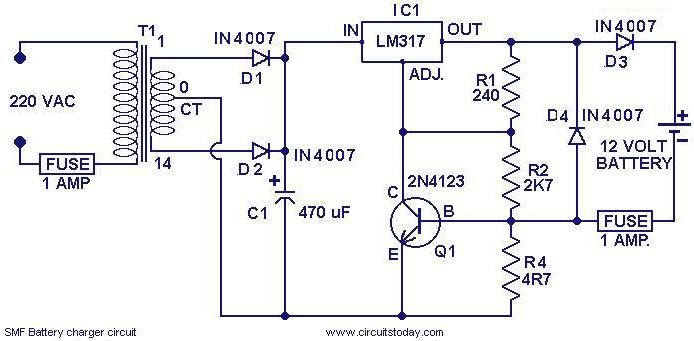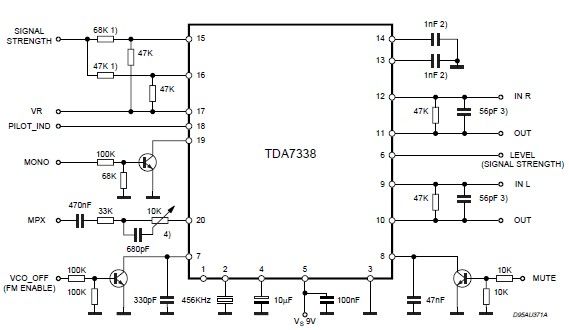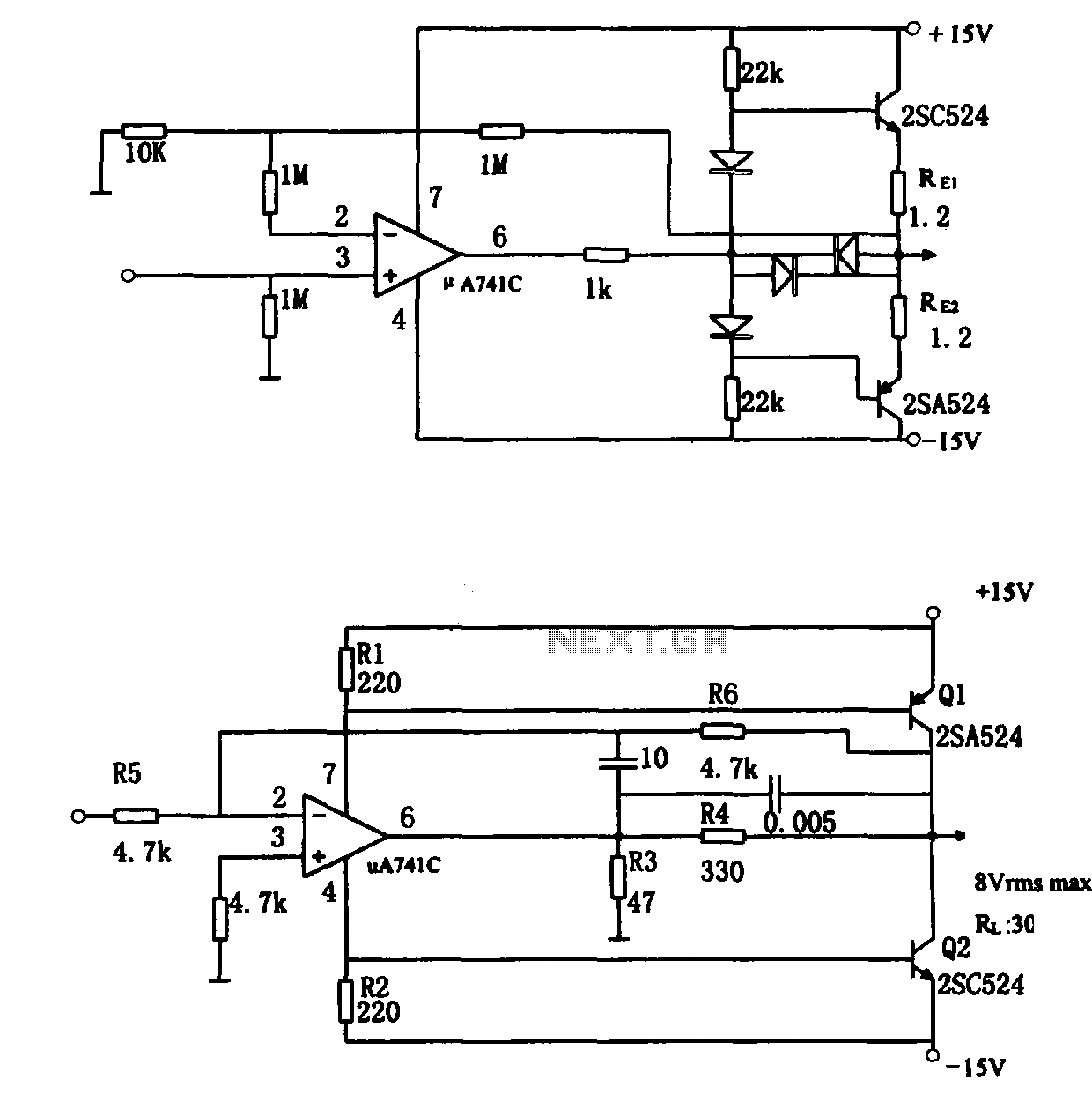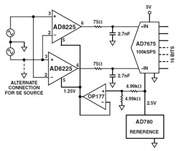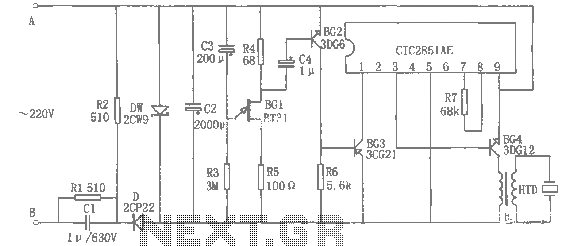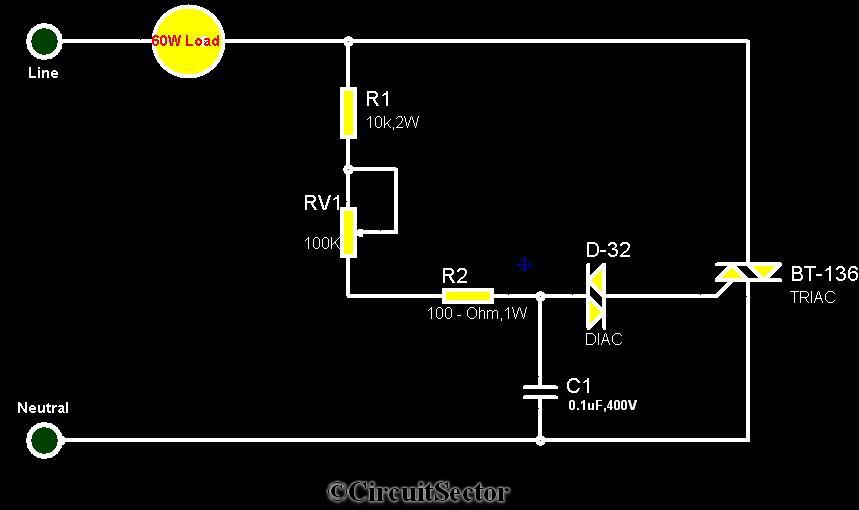
Car anti-theft alarm circuit
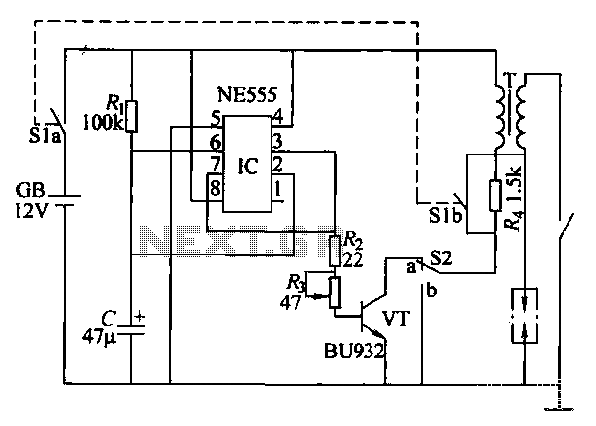
This paragraph describes an easy car alarm circuit that utilizes fewer components and is simple to produce. The circuit consists of an automobile anti-theft alarm system based on the NE555 timer, a power switch (VT), and a switch (S2), along with a delay capacitor (C) and a resistor. In this design, the automotive ignition switch (Sl, Sla, Slb) is used to control the system. The circuit is powered by a car battery (GB), and an additional limiting resistor (Re) is employed in conjunction with the ignition coil. The operation of the circuit is straightforward: during normal vehicle startup, switch S2 is in the "b" position, and the anti-theft circuit is inactive. When the car is parked, S2 is moved to the "a" position. If switch Sl is turned on, the +12V voltage charges capacitor C through resistor Ri, which gradually raises the voltage at the NE555 timer's input pin. As the voltage increases, the output of the timer goes high, turning on the power switch VT and enabling the ignition circuit, allowing the engine to start. After a few seconds, once capacitor C is fully charged and the voltage at the timer input reaches 8V, the timer triggers an internal flip-flop, causing the output to go low, which turns off VT and disables the ignition circuit, effectively shutting down the engine and preventing the car from being driven away. The engine will emit a repeated sound, serving as an alarm signal.
The Easy Car Alarm circuit is designed to provide a cost-effective and efficient solution for vehicle anti-theft protection. The NE555 timer, a versatile integrated circuit, is configured in a monostable mode to create a delay function that is crucial for the operation of this alarm system. The circuit employs a minimal number of components, which not only simplifies the assembly process but also reduces the overall cost of the project.
The power switch (VT) is typically a transistor that acts as a relay, allowing the NE555 timer to control the ignition circuit of the vehicle. When the vehicle is parked and the S2 switch is set to the "a" position, the circuit becomes active. The charging of the capacitor (C) through the resistor (Ri) establishes a time delay, during which the vehicle owner can safely exit the vehicle. The gradual increase in voltage at the NE555 input pin is monitored, and once it exceeds the threshold, the output state changes, activating the power switch.
The ignition circuit can be disabled within a few seconds after the vehicle is parked, ensuring that if an unauthorized attempt to start the vehicle occurs, the engine will not start. The alarm function is integrated into this process, as the engine emits a sound when the ignition is disabled, alerting the owner or nearby individuals of the potential theft attempt.
This design is particularly suitable for DIY enthusiasts and those looking for a straightforward solution to enhance vehicle security. The use of standard electronic components makes it accessible for assembly and modification, allowing for customization based on individual preferences or additional features. Overall, this Easy Car Alarm circuit serves as a practical and effective method to deter vehicle theft while being user-friendly and economically viable.This paragraph Easy Car Alarm circuit with the use of fewer components, easy to produce and so on. (1) circuit automobile anti-theft alarm circuit by the time base circuit NE555, power switch VT, the switch S2, the delay capacitor C and a resistor feet, ~ wind and other components, as shown in Figure 13-34. Sl (Sla, Slb) automotive ignition switch (open lock off). GB is a car battery, Re is the car with the ignition additional limiting resistor coil used. (2) circuit works in normal vehicle start-up operation , the switch S2 placed b-point, anti-theft circuit does not work. During the car is parked, S2 placed a point where if turned Sl, the + 12V voltage through Ri charges C IC so that pin and foot potential rise gradually while lC output of foot high level, so that VT conduction, the ignition circuit is turned on, the engine unit can start.
After a few seconds delay. c charging is completed, IC's feet and to foot potential rise when 8V, IC triggers internal flip, which feet from high to low, VT cut-off, the ignition circuit is turned off, automatic engine flameout, Cars can not be driven away. Starting off with the engine sound repeatedly, the equivalent of an alarm signal.
The Easy Car Alarm circuit is designed to provide a cost-effective and efficient solution for vehicle anti-theft protection. The NE555 timer, a versatile integrated circuit, is configured in a monostable mode to create a delay function that is crucial for the operation of this alarm system. The circuit employs a minimal number of components, which not only simplifies the assembly process but also reduces the overall cost of the project.
The power switch (VT) is typically a transistor that acts as a relay, allowing the NE555 timer to control the ignition circuit of the vehicle. When the vehicle is parked and the S2 switch is set to the "a" position, the circuit becomes active. The charging of the capacitor (C) through the resistor (Ri) establishes a time delay, during which the vehicle owner can safely exit the vehicle. The gradual increase in voltage at the NE555 input pin is monitored, and once it exceeds the threshold, the output state changes, activating the power switch.
The ignition circuit can be disabled within a few seconds after the vehicle is parked, ensuring that if an unauthorized attempt to start the vehicle occurs, the engine will not start. The alarm function is integrated into this process, as the engine emits a sound when the ignition is disabled, alerting the owner or nearby individuals of the potential theft attempt.
This design is particularly suitable for DIY enthusiasts and those looking for a straightforward solution to enhance vehicle security. The use of standard electronic components makes it accessible for assembly and modification, allowing for customization based on individual preferences or additional features. Overall, this Easy Car Alarm circuit serves as a practical and effective method to deter vehicle theft while being user-friendly and economically viable.This paragraph Easy Car Alarm circuit with the use of fewer components, easy to produce and so on. (1) circuit automobile anti-theft alarm circuit by the time base circuit NE555, power switch VT, the switch S2, the delay capacitor C and a resistor feet, ~ wind and other components, as shown in Figure 13-34. Sl (Sla, Slb) automotive ignition switch (open lock off). GB is a car battery, Re is the car with the ignition additional limiting resistor coil used. (2) circuit works in normal vehicle start-up operation , the switch S2 placed b-point, anti-theft circuit does not work. During the car is parked, S2 placed a point where if turned Sl, the + 12V voltage through Ri charges C IC so that pin and foot potential rise gradually while lC output of foot high level, so that VT conduction, the ignition circuit is turned on, the engine unit can start.
After a few seconds delay. c charging is completed, IC's feet and to foot potential rise when 8V, IC triggers internal flip, which feet from high to low, VT cut-off, the ignition circuit is turned off, automatic engine flameout, Cars can not be driven away. Starting off with the engine sound repeatedly, the equivalent of an alarm signal.
